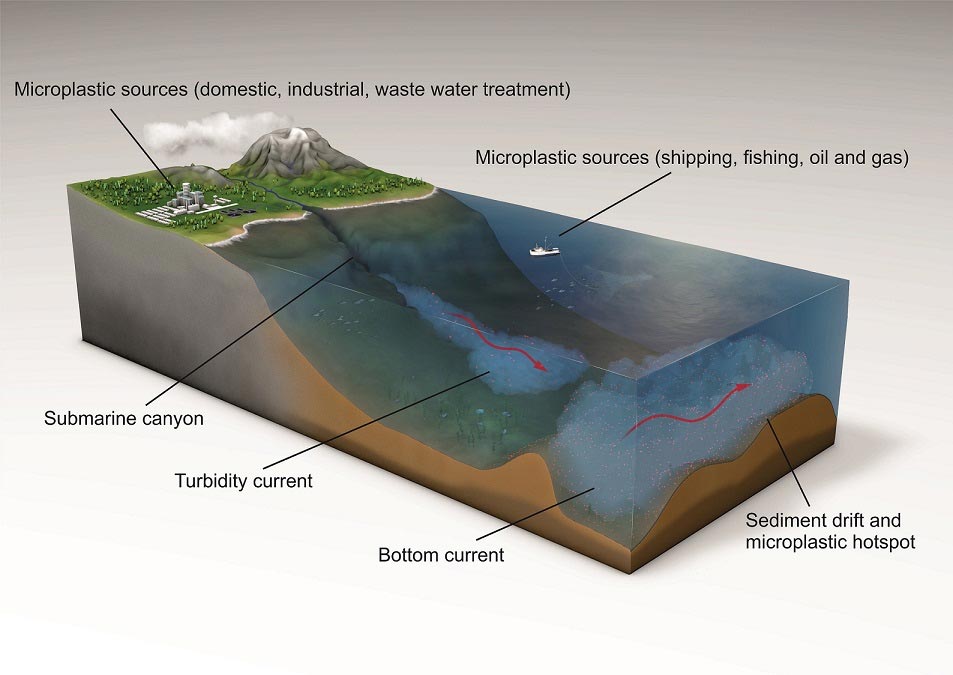Amongst the many overt and covert problems of Nature, we may have a problem that may have occurred to many but not really be taken care of by any.
If Humans are to dump 8 million tons of plastic trash annually into the ocean. And we know most of it floats, we might not be wrong to expect it to be afloat or stick near to water’s surface.
I mean the signals are right: we get most of the animals stuffed up with plastics abandoned by us, ghost nets tangling the marine souls etc. Just 3 weeks ago, a seal with plastic ring trapped on its neck for years was captured and the freed from trash slavery.
These news are common for us now. Not less than a day before, 47 tons of plastic was found at US marine protected reserve in bare three weeks.
However, there is a new-found angle to the story of Marine pollution. Marine and Climate Scientists of the decade have been infected with the question of not just the abundant plastics in Oceans as a whole but the Microplastics those may seep in to the Sea-floor.
According to Erik Van Sebille, an oceanographer at Utrecht University in the Netherlands, the seen plastic in Oceans is “less than the tip of the iceberg, maybe a half of 1% of the total”.
That prompts us to ask: where is the rest 99% plastic going if not seen?
Scientists have begun to unravel this mystery, which is expected to occur in the deep ocean and most answers we receive are very unsettling and disturbing to the core.
Some researchers use the Submersibles or skin surface that filters the seawater and take a snapshot of what’s inside it. A team in 2019 calculated out this unseen trash to be nearly 15 bits per liter of water at the depth of 200m, similar to the quantity found at land in the garbage patches around us.
Even a 2017 research paper undertaken by Sebille stated about 196million tons of plastic to have settled from the surface into deep oceans since 1950.
What takes a plastic to the ocean core?

Most of the commercial plastic floats on the surface due to its low density. It needs a significant help to get below the surface.
Plastic can by-far form an attachment to the ocean detritus that sinks ultimately. It may get fragmented under the sun, translocated by powerful underwater avalanches or enclosed by the waves, or maybe before anything else to happen find its way into a creature’s stomach.
To answer the exact reason how plastic descends to the deep ocean floor is, for the most part, a mystery in itself. The more one tries to solve it, the more it entangles. Nanoplastic research is still in its infancy and not explored in full.
However, a few laboratory tests have shown Nanoplastics to accumulate within the bloodstreams and cell membranes of organisms in variance, even passing the blood-brain barrier in a test on Japanese medaka fish, and causing varied toxic effects, including neurological damage, and reproductive abnormalities in a few.
Another international research project has made the revelation of recording the highest levels of microplastic ever on Seafloor, up to 1.9 million pieces in a thin layer covering just 1 square meter from a patch.
Currents and the Plastics floor:
These microplastics sustaining in our waters, broken down before the release or by the water-wind action in marine sphere, is known to concentrate in huge sediment accumulations, which can be termed as ‘microplastic hotspots’.
“We discovered that microplastics are not uniformly distributed across the study area; instead they are distributed by powerful seafloor currents which concentrate them in certain areas”, tells the Expert.
The ocean currents playing with the microplastics are the ones circulating the oxygenated water and nutrients, necessary for sustenance of important marine ecosystems.
Significance of the study:
The study provided the first direct link between currents’ nature and the concentrations of seafloor microplastics.
These findings may even help to predict the locations of other deep-sea microplastic hotspots and inherent research regarding the impact of microplastics on marine life.
Keeping our Oceans clean is a priority at the moment. They shelter an estimated 50-80% of all life forms on earth and contain about 99% of the living space on the planet, apart from being the biggest sink of Carbon on Earth. It’s a resource we cannot spare, if we want to survive on this planet.



